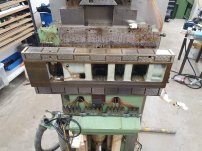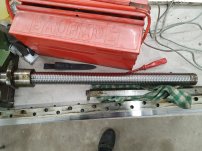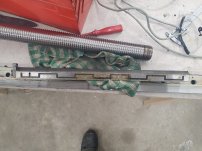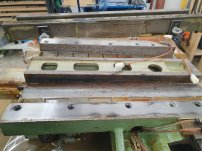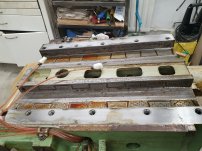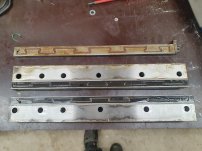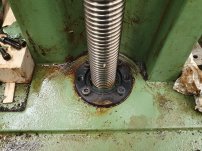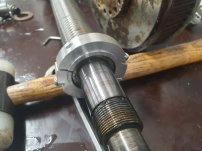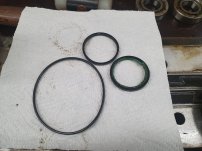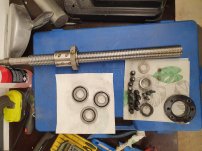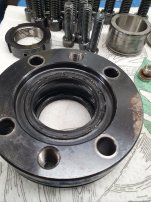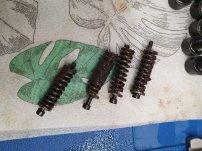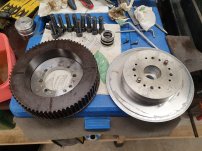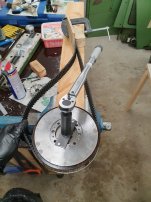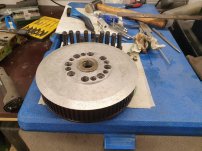Finngineering
Plastic
- Joined
- Oct 14, 2022
I recently acquired a Maho 600T, and thought I'd make a thread about it here. The machine appears to be at least in decent mechanical condition. However, the previous owner had gutted it of the complete contents of the control cabinet as well as the servos. His intention was to renew the controls with the help of a friend, and he bought and mounted new servos, but didn't get much farther than that. He sold the machine "for the price of the new servos and electrical parts" for 2400€. And this is where I pick up.
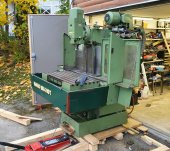
I will do the CNC side with LinuxCNC and Mesa motion cards. The servos and drives I got with the machine are not optimal, but I believe I can make it work with them (Leadshine 3000rpm/3.2Nm for horisontal axes and 2500rpm/7.7 Nm for vertical). Fortunately, the optical scales were still on the mill, even though the previous owner had no intention of using them. I will use the feedback from these for proper closed loop control. The main motor is of direct on line type, and as far as I can tell, a step-down autotransformer was used for it in the past to allow slower acceleration for gear changes. This has been scrapped as well, so I will use a VFD for the main motor and of course utilize the gearbox as well.
If anybody knows what the "T" in the model code signifies (Maho 600T), I'd be interested to hear it. I did get the operation manual in German, but if anybody has some other manuals or the proper circuit diagram, I would appreciate if you can share it. The machine serial number is 64096 and the proper circuit diagram would be E-5718. I believe it's from around 1987, give or take a couple of years.
Some more photos showing the condition of the machine.


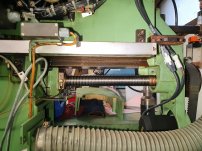


I will do the CNC side with LinuxCNC and Mesa motion cards. The servos and drives I got with the machine are not optimal, but I believe I can make it work with them (Leadshine 3000rpm/3.2Nm for horisontal axes and 2500rpm/7.7 Nm for vertical). Fortunately, the optical scales were still on the mill, even though the previous owner had no intention of using them. I will use the feedback from these for proper closed loop control. The main motor is of direct on line type, and as far as I can tell, a step-down autotransformer was used for it in the past to allow slower acceleration for gear changes. This has been scrapped as well, so I will use a VFD for the main motor and of course utilize the gearbox as well.
If anybody knows what the "T" in the model code signifies (Maho 600T), I'd be interested to hear it. I did get the operation manual in German, but if anybody has some other manuals or the proper circuit diagram, I would appreciate if you can share it. The machine serial number is 64096 and the proper circuit diagram would be E-5718. I believe it's from around 1987, give or take a couple of years.
Some more photos showing the condition of the machine.









